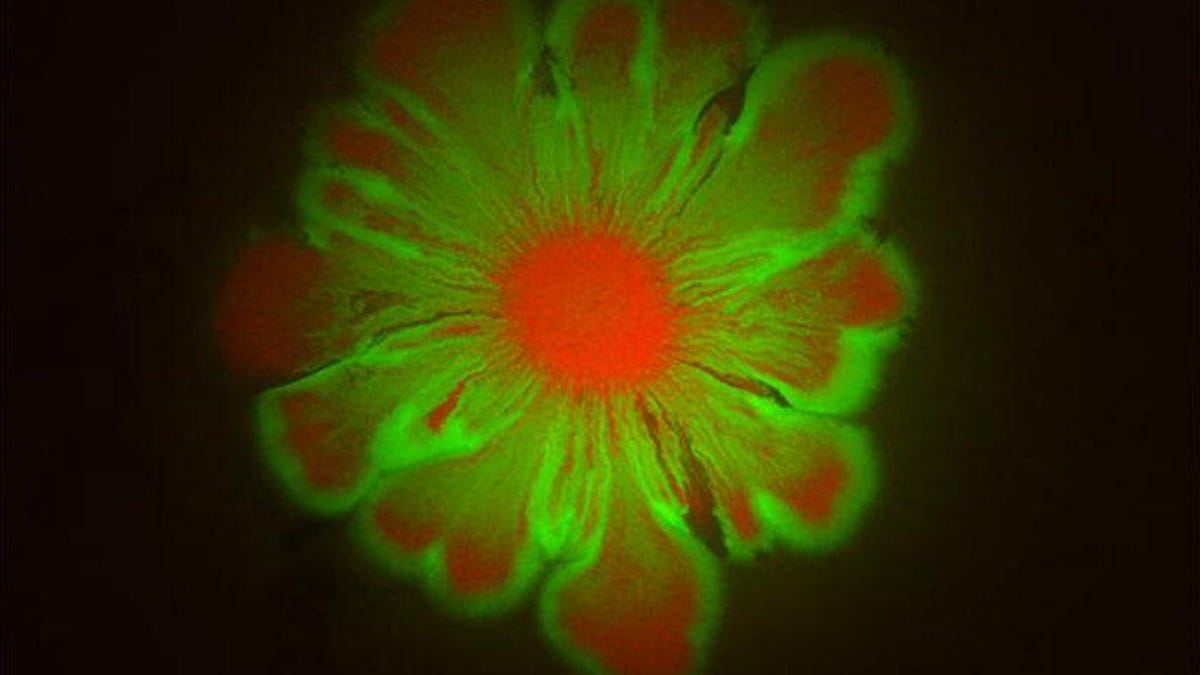Scientists accidentally turn E. coli into beautiful bacterial art
This isn't a chrysanthemum blooming. It's bacteria.

E. coli and A. baylyi worked together to make this gorgeous flower pattern.
E. coli has a bad reputation for causing infections that can result in all sorts of unpleasantness. Turns out there's an undiscovered side to E. coli that makes it the Claude Monet of the bacteria world.
Researchers at University of California San Diego discovered that mixing E. coli with A. baylyi bacteria on an agar surface in a petri dish resulted in the growth of stunning flower patterns.
Normally, E. coli can't move well on agar, but A baylyi happily spreads across the growth medium. Put the two together and they create scenic patterns as E. coli "hitchhikes" on the other bacteria as the colony grows.
The scientists released a time-lapse video of the process in action.
The results are beautiful to behold, but they're also helping scientists learn more about how bacteria can form patterns together. The team published its findings in the journal eLife on Tuesday.
"We were actually mixing these two bacterial species for another project, but one morning I found a mysterious flower-like pattern in a petri dish where a day earlier I placed a droplet of the mixture," said lead author Liyang Xiong. "The beauty of the pattern struck me, and I began to wonder how bacterial cells could interact with each other to become artists."
E. coli will always have unpleasant connotations, but we can also take a moment to appreciate its artistic side.

